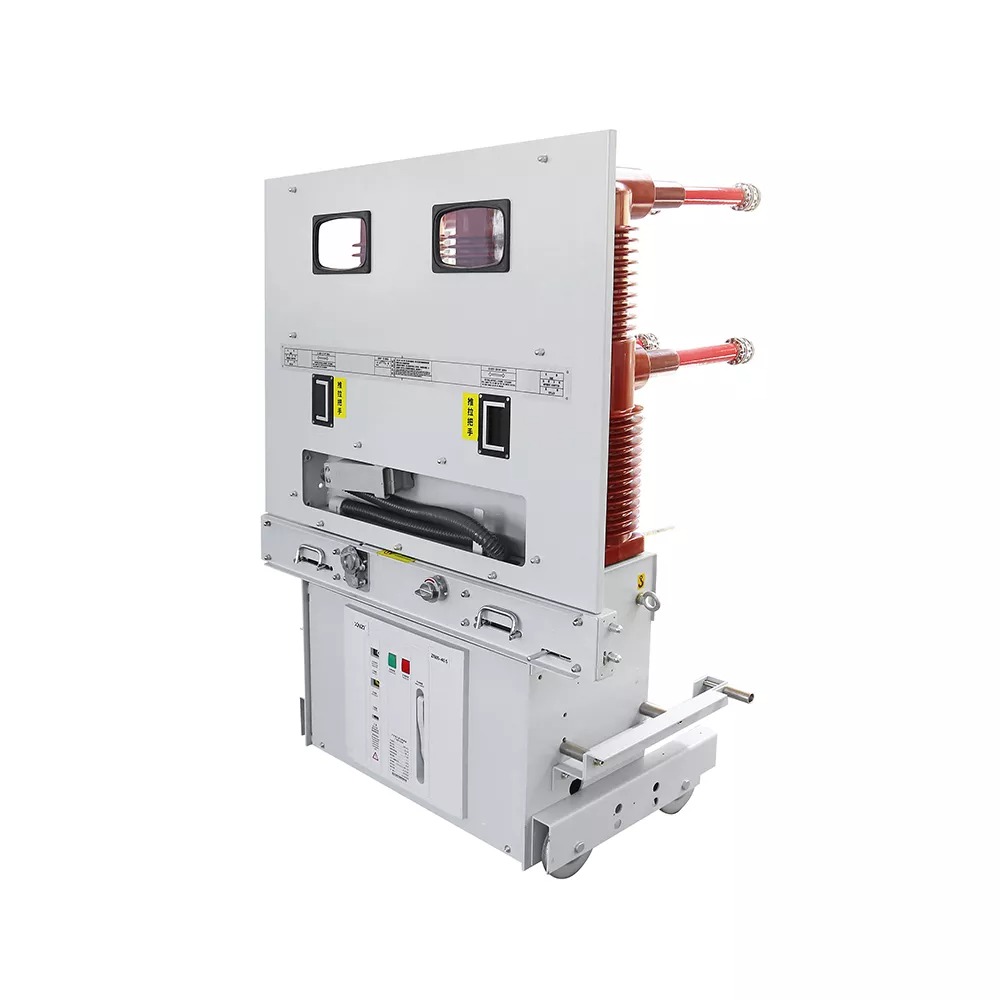How Vacuum Circuit Breakers Support Industrial Automation

Introduction to Vacuum Circuit Breakers in Industrial Automation
In today’s era of smart manufacturing and digital transformation, the Vacuum circuit breaker plays a crucial role in ensuring reliable and safe electrical performance within automated industries. A vacuum circuit breaker is an advanced electrical device used to interrupt current flow during fault conditions, protecting equipment and maintaining operational continuity. Its ability to perform efficiently under high voltages and currents makes it indispensable in industrial automation systems. As industries adopt more automated processes, the vacuum circuit breaker becomes vital for protecting control systems, motors, and electrical panels from potential overloads and short circuits.
The Importance of a Vacuum Circuit Breaker in Automation Systems
Automation systems rely on uninterrupted power to maintain precision, productivity, and efficiency. A vacuum circuit breaker ensures this by providing fast interruption of current when faults occur. Compared to traditional circuit breakers, the vacuum circuit breaker operates faster and offers higher reliability. In automated factories, where equipment such as robotic arms, conveyors, and PLC systems depend on stable power, a vacuum circuit breaker helps prevent downtime caused by electrical issues. The reduced arc energy and minimal maintenance requirements make the vacuum circuit breaker an ideal solution for modern industrial applications.
Working Principle of a Vacuum Circuit Breaker
The vacuum circuit breaker operates by extinguishing the arc in a vacuum environment. When a fault occurs, the contacts inside the vacuum circuit breaker separate, creating an electric arc. However, since the arc is formed in a vacuum, it quickly extinguishes due to the absence of ionized particles. This unique mechanism allows the vacuum circuit breaker to restore power safely and quickly once the fault is cleared. The simplicity of this operation ensures high performance and durability, which are essential for automation systems that demand consistent electrical reliability.
Advantages of Using a Vacuum Circuit Breaker in Industrial Automation
One of the main advantages of using a vacuum circuit breaker is its ability to handle high voltages and currents with minimal maintenance. In industrial automation, where machines operate continuously, downtime must be minimized. The vacuum circuit breaker offers long service life, low power loss, and excellent arc-quenching properties. It also ensures environmental safety since it does not use oil or gas for insulation. The compact design of a vacuum circuit breaker makes it suitable for control panels and switchgear in automated facilities, optimizing space while maintaining high performance and protection levels.
Enhancing Safety and Efficiency with Vacuum Circuit Breakers
Safety and efficiency are top priorities in industrial automation, and a vacuum circuit breaker directly supports both. By quickly isolating faulty sections of a circuit, the vacuum circuit breaker prevents damage to expensive automation components. Its consistent performance ensures that critical operations continue without disruption. Furthermore, the vacuum circuit breaker reduces maintenance costs and improves operational safety by eliminating the risk of fire or explosion associated with oil-based breakers. This reliability makes the vacuum circuit breaker a trusted choice for industrial engineers seeking sustainable automation solutions.
Integration of Vacuum Circuit Breakers in Automated Power Systems
Modern industries use integrated power systems that combine sensors, control units, and communication networks. A vacuum circuit breaker can be seamlessly integrated into these systems, allowing remote monitoring and control. Smart vacuum circuit breaker models come with digital communication interfaces that support IoT and SCADA systems. This integration allows real-time monitoring of current flow, fault detection, and energy management. By connecting the vacuum circuit breaker to the automation network, facilities can optimize performance, reduce downtime, and improve power system intelligence.
Comparison of Vacuum Circuit Breaker with Traditional Breakers
When comparing a vacuum circuit breaker to oil or air circuit breakers, the differences are clear. The vacuum circuit breaker offers superior insulation and faster arc extinction, resulting in enhanced operational safety. Unlike oil circuit breakers that require regular maintenance and pose environmental risks, the vacuum circuit breaker is maintenance-free and eco-friendly. It also consumes less power and occupies less space, making it ideal for modern automated industries. The higher mechanical endurance and switching speed of the vacuum circuit breaker provide additional benefits in automation applications where reliability is critical.
Role of Vacuum Circuit Breakers in Power Distribution for Automation
In industrial automation, power distribution systems must maintain consistent voltage and current levels to support machines and control devices. A vacuum circuit breaker ensures this by regulating the electrical load and isolating faults efficiently. It helps maintain balanced energy distribution across automated production lines. By incorporating the vacuum circuit breaker into switchgear systems, industries achieve improved fault tolerance and load management. This ensures continuous productivity and stable operations even in demanding industrial environments.
Future of Vacuum Circuit Breakers in Industrial Automation
As automation technologies evolve with AI, robotics, and smart grids, the role of the vacuum circuit breaker will continue to expand. Manufacturers are developing intelligent vacuum circuit breaker designs with digital monitoring, predictive maintenance, and energy efficiency features. These advancements enable industries to anticipate electrical failures and perform maintenance before breakdowns occur. The vacuum circuit breaker is becoming a cornerstone of Industry 4.0 by enabling safe and efficient electrical management in complex automated systems.
Conclusion
The vacuum circuit breaker is an essential component of industrial automation, ensuring safety, reliability, and energy efficiency. Its superior arc-quenching ability, long lifespan, and compatibility with digital systems make it the preferred choice for modern industrial environments. By integrating the vacuum circuit breaker into automation networks, industries can achieve greater performance, reduced downtime, and sustainable operations. As automation continues to advance, the vacuum circuit breaker will remain a vital part of every efficient and intelligent industrial power system.




